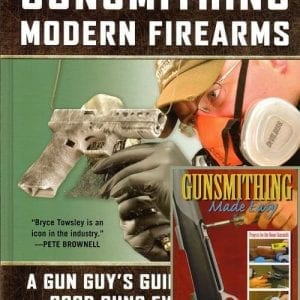Like everybody else writing a blog, I have some strong opinions. We all know that opinions are like assholes, everybody has one and they all stink except mine.
But, for what it’s worth, the opinions expressed here have been formulated from nearly half a century of big game hunting, guiding and gun testing. Not just as a casual hunter, but as a guy that has made his living with guns and hunting for thirty years now. A guy who has averaged more than 100 days of hunting every year for decades. During that time I have witnessed several hundred big game critters being shot. So, yes, I have some opinions about guns, cartridges and bullets. One that seems to always be controversial when I put it in print is that with all else being equal, a bigger, heavier, bullet is always better.
A magazine article on this topic is guaranteed to generate a multitude of letters and emails explaining what a moron I am. The one constant is that they will always say “it’s all about shot placement” or something to that effect.
Well, duh.
Of course it’s about shot placement. The biggest gun in the world is worthless if you shoot them in the foot. But, the only hunters who can guarantee with absolute certainty where their bullet will strike are the keyboard warriors sitting in their underwear, hiding deep in their Mom’s cellar and spouting their expertise over the internet. For any hunter who owns a pair of boots and actually steps out in the field, perfect shot placement is sometimes an elusive quest. A bigger bullet brings a bit of insurance to the program
This was driven home again last week while hunting driven wild boar in Lithuania. On these hunts the targets are always running.
I might note that writing about shooting running targets is the third biggest letter generator. First place is any criticism of the .270 where Jack O’Connor is mentioned. I usually get death threats with that one! The letters against shooting running game usually start with, “I am a hunting education instructor” and end with calling me bad names. But, in Europe, that’s how it’s done and they do it well.
There were twenty-two hunters on the hunt and we were all shooting Sauer’s 303 semi-auto rifles in .30-06 with Aimpoint sights. The ammo was Norma with 165-grain Oryx bullets. I have used the Oryx bullet to shoot a lot of animals, including big and tough stuff like moose and zebra, so I know it to be one of the finest hunting bullets made. Most knowledgeable hunters will argue that the .30-06, particularly with this ammo, is more than adequate for wild boar and technically they are 100% correct. But, let’s look at how it played out.
The group took eighty-six big game animals in three days. Of that, I think seventy-five were wild boars. The first boar I shot was a three hundred pound brute that had already taken two solid hits to the chest from another hunter a couple of hundred yards from me. It looked healthy when I shot it through the heart and it still managed to run another fifty yards. This was not unusual and the tracking dogs followed up a lot of wounded boar. (With good trackers, good dogs and fresh snow I believe that the recovery rate was almost 100 %.) Of the six wild boars I shot, only two dropped in sight. One was a small boar that I hit twice in the shoulder and the other was hit in the spine. A high percentage of the boar had to be tracked. Most were dead when they found them, but several required finishing shots.
Contrast this with another driven hunt for boar I participated in a few years back in Hungary. That time the shooters were using rifles chambered for 9.3X62, a favorite cartridge with experienced European hunters for this style of hunting. This cartridge uses a 36-caliber, 286-grain bullet with a muzzle velocity around 2,400 fps. On that hunt a much lower percentage of wild boars needed tracking. I don’t have the exact figures, but I am comfortable in saying less than half as many. In fact, I think that is conservative and it was probably much lower. The difference? Bigger, heavier bullets. It’s simple physics, they punch bigger holes and they penetrate deeper so the odds of damaging something important are increased.
Wild boar are tough and on these driven hunts there are a lot of critters shot, so it gives us a lot more data to work with than most hunting situations. Clearly, the bigger bullets made a difference.
I am not saying you need a .470 Nitro Express to hunt deer, but I prefer a .30-06 Springfield over a .243 Winchester and I have a lot of experience with both.
For tough critters like elk and bears or big stuff like a moose, I think a .338 Winchester makes more sense than a .270 Winchester. Sure, the little cartridges will work, but the margin of error is often razor thin and if you hunt a lot the odds of sooner or later encountering problems are so high that a Vegas book maker would call it a “sure thing.”
Recoil? With technology today that’s all but a non-issue. Well-designed stocks and muzzle brakes mitigate felt recoil so that any adult can use a reasonable cartridge for the game.
Pick the gun you shoot best? Maybe that’s a .270 right now, but if you practice (and you should) it will be the gun that shoots the bigger cartridge soon enough.
To prove you are a hell of a shot? I think it’s poor ethics to do that with living game animals. Come to some 3-gun competitions and prove it there.
So, why risk it? Why not use enough gun? I can’t think of a single, logical argument against it..




